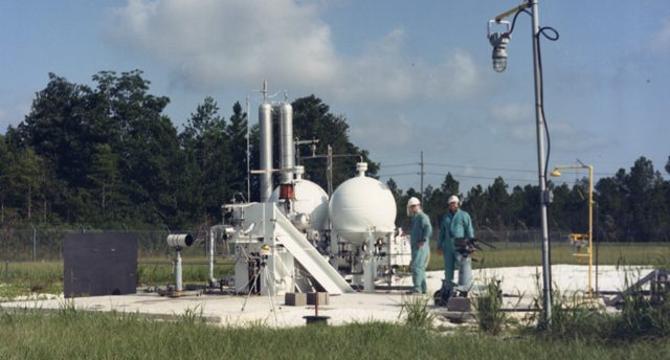Nasa
1M
438

Image Credit: Nasa
NASA Stennis Flashback: Learning About Rocket Engine Smoke for Safe Space Travel
- NASA Stennis Space Center served as a hands-on classroom for NASA engineers to improve space shuttle main engine efficiency through rocket engine plume exhaust diagnostics from 1988 to the mid-1990s.
- The Diagnostic Test Facility at NASA Stennis conducted tests to study rocket engine exhaust, aiding in understanding engine health and operation, similar to a doctor's checkup.
- Constructed in the late 1980s, the Diagnostic Testbed Facility featured a control center, data analysis center, and allowed for testing 1,000-pound-thrust rocket engines to simulate space shuttle main engines.
- Engineers at the facility analyzed engine exhaust plumes, utilizing remote cameras, spectrometers, and microcomputers to determine the emissions of metals and elements during combustion.
- The facility played a crucial role in engine safety operations, allowing for real-time learning opportunities in exhaust diagnostics and multiple short-duration hot fire tests.
- Glenn Varner, a NASA Stennis engineer, highlighted the valuable learning experience at the Diagnostic Test Facility, involving tasks such as purging, ignition, and handling propellants.
- The facility's impact extended beyond testing, contributing to collaborations with commercial companies and paving the way for the success of the NASA Stennis E Test Complex.
- Knowledge and equipment from the Diagnostic Testbed Facility have been leveraged for two decades at NASA Stennis, supporting various aerospace projects and infrastructure development.
- Engineers who worked at the facility have transitioned to supporting E Test Complex projects, sharing their expertise in propulsion operations and contributing to the center's future infrastructure and knowledge.
- The Diagnostic Testbed Facility's legacy endures at NASA Stennis, showcasing a spirit of innovation and collaboration that continues to drive advancements in space exploration.
Read Full Article
26 Likes
For uninterrupted reading, download the app